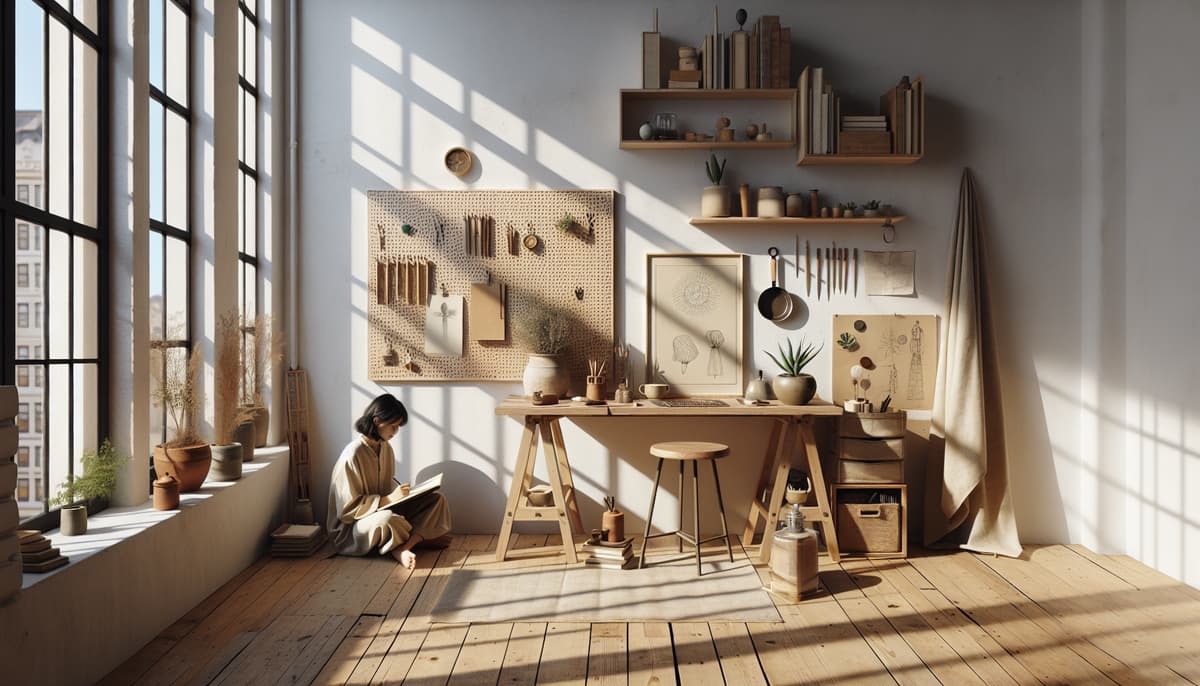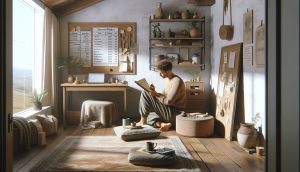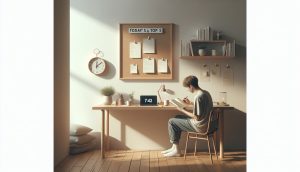You know that feeling when your space is so full you can’t think straight? The desk crammed with papers, the closet overflowing with clothes you forgot you owned, the background noise of stuff whispering “you should be doing more”? Yeah, that.
I used to believe creativity needed endless supplies, big studios, all the bells and whistles. But I’ve learned something that turned my whole world inside out: having less is often the very thing that invites more creativity.
It’s not about lack. It’s about clarity. It’s about learning the art of creative resourcefulness—that beautiful, scrappy, imaginative energy that wakes up when we strip away the noise and give ourselves room to breathe.
Let’s dive into how minimalism doesn’t limit creativity—it forces you to invent what doesn’t exist. And in doing so, it gives you back your time, your space, and your spark.
Why Simplicity Sets the Stage for Genius
Ever noticed how your best ideas come when you’re walking, showering, or staring out a window? There’s a reason for that. Our brains crave whitespace. Without it, we’re just reacting—scrolling, comparing, consuming.
Minimal living clears out the mental clutter as much as the physical. It’s the difference between a chaotic junk drawer and a blank canvas. One overwhelms, the other invites possibility.
When you live with intention, every object has a purpose. Every decision becomes a creative one. You start asking:
- How can I repurpose what I already have?
- What can I create instead of buy?
- How do I turn this limitation into a solution?
That’s the essence of creative resourcefulness. Not having everything isn’t a roadblock—it’s a creative prompt.
From Clutter to Clarity: The Unexpected Superpower of Less
I once moved into a tiny flat in London with nothing but a suitcase, a notebook, and a thrifted moka pot. I thought I’d feel untethered, maybe even a bit deprived. But what I felt was awake.
Without the distractions, I started writing again. Sketching again. I rearranged second-hand furniture into a space that fit me perfectly. I cooked meals with five ingredients and loved every bite. I wasn’t just surviving—I was creating like never before.
This is the paradox: when you have fewer options, you make bolder choices. You think sideways. You innovate. You see potential where others see scarcity. And that’s where true magic lives.
Constraints as Catalysts: The Birthplace of Innovation
Some of history’s most groundbreaking inventions came from a lack of something. The Polaroid camera? Born from a child’s question and her father’s refusal to say “that’s not possible.” The iPod? Created because Steve Jobs wanted “a thousand songs in my pocket.”
These weren’t dreams built in abundance. They were born in constraint.
When you can’t afford more, you imagine better. When you don’t have space, you design smarter. When you stop outsourcing your needs, you reclaim your power to create.
Creative resourcefulness is not a skill you’re born with—it’s one you build every time you choose to work with what you’ve got instead of waiting for perfect conditions.
The Art of Living with Less and Creating with More
Minimalism isn’t aesthetic minimalism alone—it’s functional minimalism. It’s asking: What do I truly need? What supports my purpose? What gets in the way?
And then it’s about making from that place. Whether you’re a writer, designer, parent, or entrepreneur, this mindset shift changes everything:
- Instead of needing a fancy office, you carve out a corner that inspires you
- Instead of buying more tools, you master the ones you already have
- Instead of chasing trends, you refine your voice
This idea is beautifully explored in this article from Nourishing Minimalism, which dives into how fewer visual distractions can unleash deeper, more meaningful creativity.
Because when you stop filling space just to fill it, you start filling it with things that matter.
Reframing “Not Enough” Into “More Than Enough”
Let’s be honest, the world constantly tells us more is better. More tools, more storage, more content, more hustle. But here’s the revolutionary flip: less is often exactly what you need.
When you shift your mindset from “I don’t have enough” to “What can I do with what I have?” you unlock a whole new level of resourcefulness. You become inventive. You find joy in the process. You make things you didn’t even know you were capable of.
Creative resourcefulness isn’t about being frugal—it’s about being free. Free from needing permission, free from perfectionism, free from the weight of too many choices.
Practical Ways to Cultivate Creative Resourcefulness at Home
Feeling inspired but not sure where to start? Here are a few ways to let minimalism fuel your creativity:
- Limit your tools: Stick to one notebook, one app, one medium for a week. See how it focuses your ideas.
- Do a space detox: Clear your workspace of everything except what you absolutely need. Let the emptiness invite inspiration.
- Set creative constraints: Write a poem using only ten words. Build a meal with five ingredients. Design without color. Constraint leads to innovation.
- Repurpose before replacing: Turn jars into paintbrush holders. Use old books as laptop stands. Let your environment become your toolset.
The goal isn’t to deprive yourself. It’s to unleash yourself. To move from consumption to creation. From clutter to clarity.
The Power of Choosing Intention Over Excess
Minimalism isn’t about empty rooms and beige everything. It’s about full presence. About choosing what nurtures your creativity and letting go of what doesn’t.
When you live simply, you live wide awake. You notice more. You feel more. And you create more—not because you have everything, but because you finally have enough.
So the next time you feel stuck, overwhelmed, or uninspired, don’t ask what you’re missing. Ask what you already have—and how you can use it differently.
Because constraints don’t shrink your imagination; they sharpen it until every idea becomes a necessity, not a luxury.




